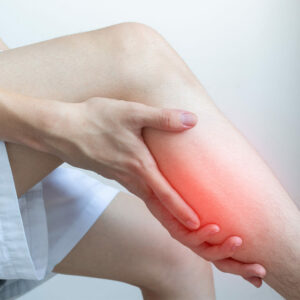How to Stop Muscle Spasms
How to Stop Muscle Spasms: Understanding and Managing Muscle Twitches

Muscle spasms cause your muscles to involuntary tighten (or contract). Although they are common, they can be painful and unpredictable. Muscle spasms can occur in one muscle or a group of muscles – and can happen to anyone. Dr. Danielle Magrini, a fellowship-trained pediatric sports medicine specialist at Orlin & Cohen, explains how to stop muscle spasms with tips and advice for treatment and prevention.
What is a muscle spasm?
A muscle spasm, also known as a muscle cramp, is when your muscle unwillingly and uncontrollably tightens up. Contractions can be sudden, intense, and temporary. Most of the time, muscle spasms aren’t a sign of a serious health condition or underlying disease. Typically, a muscle spasm only lasts for a few minutes.
What causes muscle spasms?
A muscle spasm results from one or more of the following circumstances:
- Dehydration
- Fatigued muscles
- Tight musculature
- Electrolyte imbalances
- Compromised blood flow or nervous innervation to an area
- Inadequate nutrition
- Poor-fitting clothing or exercise equipment
Can dehydration cause muscle spasms?
Yes. If dehydration is part of the problem, make sure to get in some additional fluids (usually with electrolytes) to alleviate muscle spasms.
How to stop a muscle spasm immediately
If a muscle spasm occurs, do the following:
- Stop your activity.
- Gently massage the area where the spasm is occurring. Use circular motions and gradually apply more pressure as the muscle allows.
- Use a heating pad to relax the muscles and increase blood flow to the area. Learn more about how heat can relax your muscles.
- Stretch the muscle if you’re able to. You should stretch slowly and carefully in the opposite direction of the contraction.
If your muscle spasm is persistent, severe, or accompanied by other symptoms, you should seek professional medical care.
Tips for preventing muscle spasms
The best way to stop a muscle spasm is to prevent it from happening in the first place. Here are a few tips that can help you do just that:
- Stretch your muscles (especially before you go to sleep)
- Do flexibility exercises
- Stay hydrated
- Don’t exercise in extreme heat
- Make sure your shoes fit properly
- Maintain a healthy body weight
Treating chronic muscle spasms
Most of the time, muscle spasms naturally go away on their own. However, some people suffer from chronic muscle spasms, which means the spasms happen frequently. If you suffer from chronic muscle spasms, consult an orthopedic specialist or neurologist. These medical professionals can complete diagnostic assessments, including EMG/NCV tests, to determine the underlying cause and the best treatment option.
Physical therapy
If your muscle spasms are severe and frequent, your doctor might recommend physical therapy. This rehabilitative care aims to ease pain, improve function, and increase mobility, which can reduce the frequency and severity of muscle spasms. Learn more about the types of physical therapy options we offer at Orlin & Cohen.
Acupuncture
Another way to treat muscle spasms is acupuncture. This is a traditional Chinese medicine practice where thin needles are placed at specific points throughout the body.
At Orlin & Cohen, we combine traditional acupuncture techniques with our comprehensive orthopedic expertise to help patients find relief from pain, including muscle spasms. Orthopedic acupuncture stimulates the central nervous system to improve blood flow and promote muscle relaxation, ultimately relieving pain and the muscle tension that causes contractions or spasms.
Suffering from muscle spasms or cramps? We’ve got a specialist for that – and same-day appointments. Contact us to learn more, or request your appointment online now.



